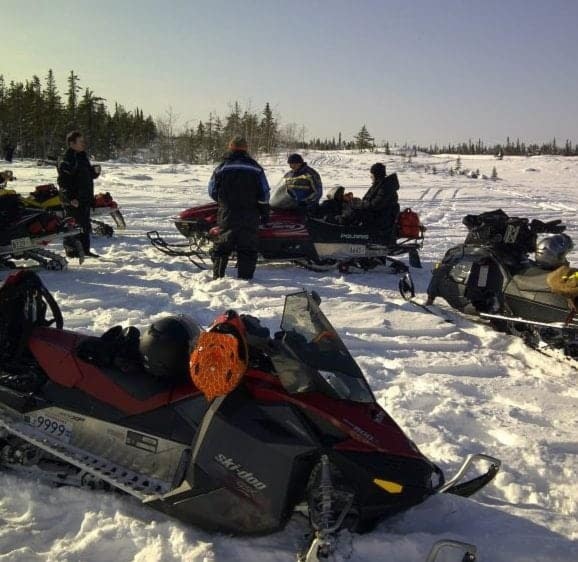A diver who says he helped haul three snowmobiles out of waters near Prosperous Lake over the weekend is warning the public to be weary of "unexpected" conditions on area lakes.
"The ice is thin. People just need to be safe going out there right now," part-time rescue diver Jeremy MacDonald told Yellowknifer.
MacDonald says he was contacted on Sunday to retrieve a trio of snowmobiles that had plunged into the icy waters the day before.
Media reports stated three tourists were riding the snowmobiles Saturday when they fell through thin ice near the channel that links Prosperous Lake to McMeekan Bay – the same spot where a minivan and another snowmobile recently fell through.
MacDonald's weekend recovery of the machines comes on the heels of reports of at least four individuals and one snowmobile falling through ice in the Yellowknife area over the past two weeks – a rash of incidents the seasoned diver says is unusual.
"Something's funny with the environment," MacDonald said. "In my five years here I never saw things freeze up so late."
The City of Yellowknife, whose fire department wasn't called to incident's site Saturday, isn't sure why varying ice levels are occurring this year, according to communications director Iman Kassam.
"It may be due to varying water levels, new or existing water currents under the ice, or possibly a warmer start to the winter season," stated Kassam in an email.
All lakes included in the city's ice measurements had cleared the six inch safety threshold when testings in mid to late November were last carried out, according to the city's website.
"We measure the ice in specific areas starting in November of each year and continue until we have six inches of ice," Kassam wrote. "The depth is considered safe for walking and snowmobiling."
Kassam added the city continues to warn residents ice often forms across bodies of water at uneven depths and that Yellowknifers should exercise caution when walking or travelling on lake ice.
Bruce Hewlko, general manager of Sub-Arctic Surveys Ltd. and past president of the Great Slave Snowmobile Association, says snowmobilers should follow certain safety practices in light of the "extremely high" number of residents falling through ice this year.
"Avoid areas where there's possibly currents and flowing water. Creeks, rivers, between islands and points of land," Hewlko said, specifically pointing to areas like the mouth of the Yellowknife river as spots to steer clear of.
Hewlko also suggested snowmobilers travel in packs and always carry emergency kits that include ice picks and fire starters.
On the potential causes of the spike in residents falling through area ice, Hewlko said the record snowfall recorded late last month could be playing a role, as the heavy deposit could have insulated the ice below.
RCMP told Yellowknifer they couldn't confirm if three tourists had fallen through the ice Saturday, as no calls for service were received.
